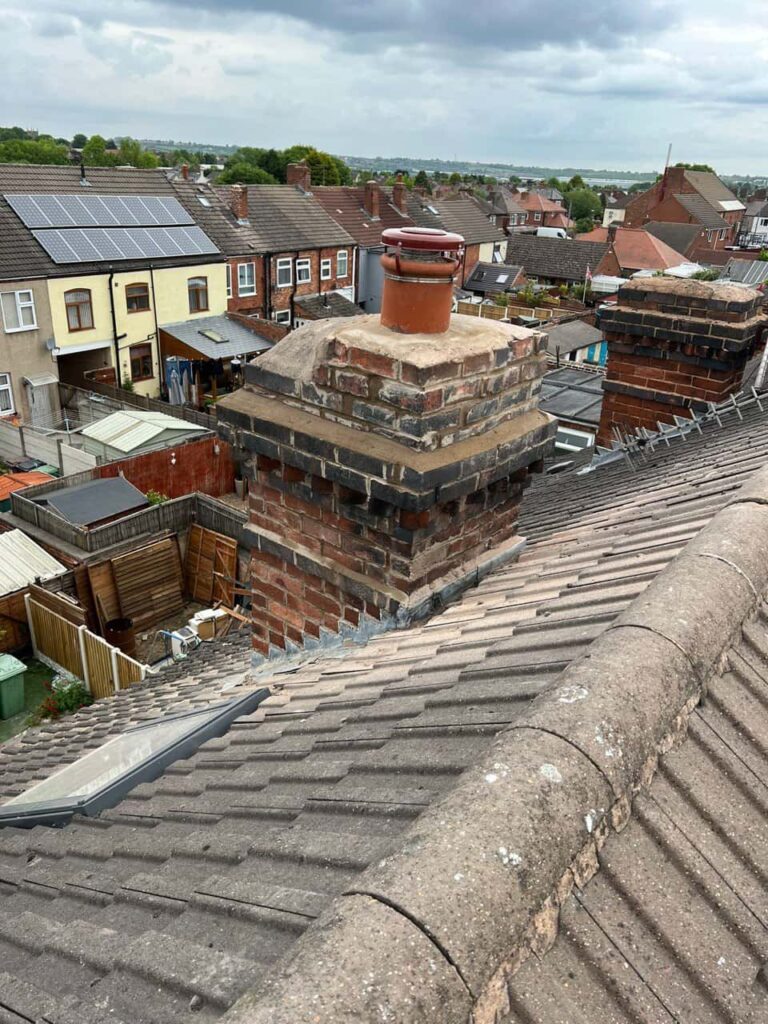Roof underlayment plays a crucial role in the overall protection and longevity of your roof. It serves as a secondary layer of defence against moisture, weather, and other elements, sitting between the roofing material (such as tiles or shingles) and the roof decking. Choosing the right underlayment is essential for ensuring that your roof performs effectively and provides long-lasting protection. At Kidderminster Roofing Repairs, we provide expert roofing services in Kidderminster, Worcestershire, and understand the importance of selecting the correct underlayment for UK weather conditions. In this blog, we’ll explore the different types of roof underlayment and their benefits.
1. Felt Underlayment
Traditional and Widely Used
Felt underlayment, also known as tar paper, is one of the most common types of roofing underlayment and has been used for decades. Made from a blend of natural or synthetic materials saturated with asphalt, felt underlayment provides a moisture-resistant barrier. It is available in two main types: 15-pound and 30-pound felt, with the latter being thicker and more durable.
- Advantages:
- Affordable and widely available
- Provides basic protection against water and wind
- Suitable for a variety of roofing materials
- Easy to install
- Considerations:
- Can be less durable compared to newer synthetic options
- More prone to tearing, especially in extreme weather conditions
- Can absorb moisture, which may lead to wrinkling or buckling over time
Felt underlayment is a reliable choice for traditional roofs but may require more frequent maintenance in areas prone to heavy rain or snow.
2. Synthetic Underlayment
Lightweight and Highly Durable
In recent years, synthetic underlayment has become a popular choice due to its enhanced durability and performance. Made from engineered polymers, synthetic underlayment is designed to be stronger, lighter, and more resistant to water and UV exposure than traditional felt. This type of underlayment is especially useful in areas with severe weather conditions, as it offers superior protection and longevity.
- Advantages:
- Highly resistant to water, tearing, and UV rays
- Lightweight, making installation easier and faster
- More durable than traditional felt underlayment
- Provides better traction for roofers during installation
- Considerations:
- More expensive than felt underlayment
- Some synthetic materials may not be compatible with certain types of roofing materials
For homeowners looking for long-term protection and durability, synthetic underlayment is an excellent option that can withstand the challenges of the UK’s unpredictable weather.
3. Rubberised Asphalt Underlayment
Premium Waterproof Protection
Rubberised asphalt underlayment is a high-performance option designed for areas of the roof that are most vulnerable to water intrusion, such as valleys, edges, and around chimneys or skylights. This type of underlayment is self-adhesive and offers superior waterproofing capabilities, making it an ideal choice for homes in regions prone to heavy rainfall or snow.
- Advantages:
- Provides excellent waterproofing protection
- Self-sealing around nails, reducing the risk of leaks
- Ideal for roofs with complex features or areas prone to water accumulation
- Long-lasting and durable in extreme weather conditions
- Considerations:
- More expensive than other underlayment types
- Typically used in combination with other underlayment materials, rather than for the entire roof
Rubberised asphalt underlayment is often used in high-risk areas of the roof, providing extra protection where it’s needed most.
4. Peel-and-Stick Underlayment
Self-Adhesive and Easy to Install
Peel-and-stick underlayment is a modern, self-adhesive product that makes installation quicker and easier. This type of underlayment creates a strong, watertight seal on the roof decking, making it highly effective in preventing moisture from seeping into the roof structure. Peel-and-stick underlayment is particularly beneficial for roofs with steep slopes, where traditional underlayment may struggle to stay in place.
- Advantages:
- Quick and easy installation with its self-adhesive backing
- Provides excellent water resistance and sealing
- Can be used as a secondary waterproof layer under various roofing materials
- Reduces the risk of leaks around fasteners
- Considerations:
- More expensive than traditional felt underlayment
- Requires precise installation to avoid wrinkles or air pockets
Peel-and-stick underlayment is ideal for homeowners looking for a high-performance, low-maintenance solution that provides excellent moisture protection.
Conclusion
Choosing the right type of roof underlayment is essential for protecting your home from the UK’s often unpredictable weather. Each type of underlayment offers unique benefits, from the traditional affordability of felt to the high durability of synthetic materials. Whether you’re looking for budget-friendly options or premium waterproof protection, understanding the differences between these materials will help you make the best decision for your roof.
Call us on: 01562 540 693
Click here to find out more about Kidderminster Roofing Repairs
Click here to complete our contact form and see how we can help with your roofing needs.

